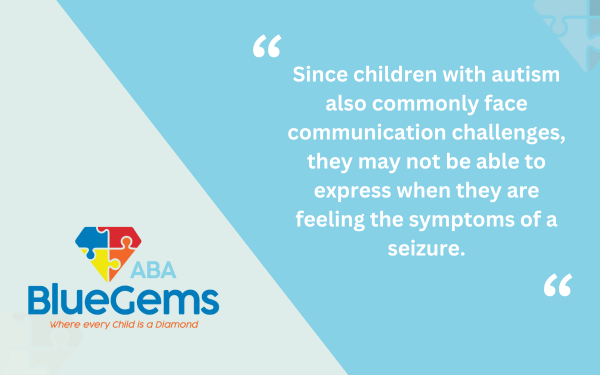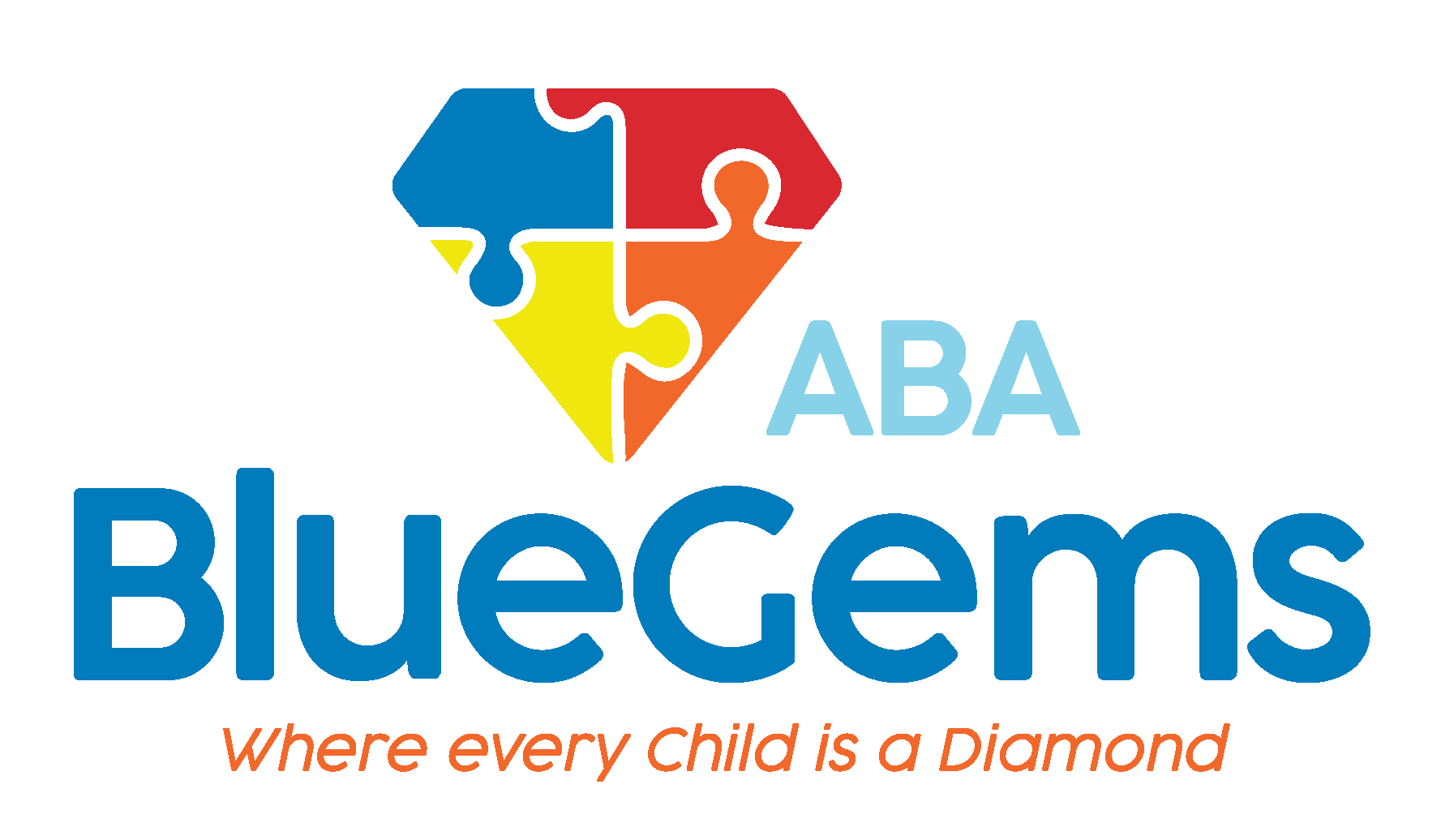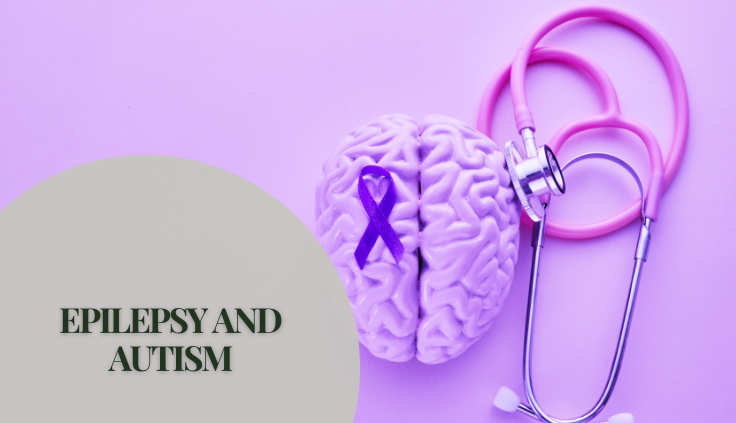Epilepsy and Autism
Autism spectrum disorder (ASD) is a neurodevelopmental disorder that affects people for their entire lives. Even though children are born with autism, the common signs and symptoms aren’t easy to spot right away, which is why most people are diagnosed between the ages of 3 and 5.
ASD can span a very wide spectrum of symptoms and effects. That being said, it is generally characterized by deficits with communication and social interactions, as well as repetitive behaviors, restrictive interests and/or sensory sensitivities.
Autism also has a relatively high rate of comorbidities with other disorders. One such disorder that has a high comorbidity rate is epilepsy.
Below, we’ll discuss what epilepsy and autism are, as well as the relationship between the two.
Table Of Contents
What is Epilepsy?
According to the Epilepsy Foundation, epilepsy is the fourth most common neurological disorder in the world1. It is characterized by surges of electrical activity that occur in the brain2, which then cause people to have recurring seizures.
There may not be a particular reason why the seizures occur, though there could also be specific things that trigger seizures. That’s why it’s important for people who have epilepsy — as well as their parents, family members and other caregivers — to identify some of the possible situations and patterns that lead to seizures.
There are multiple types of seizures3, and people who have epilepsy may suffer from more than one of them. All seizures, though, are disruptive to everyday life and can be dangerous as well, especially if they occur while the person is walking, driving, riding a bike or more4.
What is the Relationship Between Epilepsy and Autism?
There is a high comorbidity between epilepsy and autism5, with people who have ASD more likely to have epilepsy than the general public. Symptoms of epilepsy in children on the autism spectrum may not develop into their teenage years, though.

According to various studies, about 16% of people who have ASD also have epilepsy6, and the prevalence is higher for girls. Likewise, about 6% of people who have epilepsy also have ASD7, with the prevalence rate here being higher for boys.
While there are many factors that play a role in a person having both epilepsy and autism, the one that’s most associated with the two disorders co-occurring is the person having a learning disability8.
Some scientific research has suggested that the reason why the prevalence of epilepsy and autism together is so high is because there are genes that share a link to both disorders. Tuberous sclerosis, Fragile X syndrome and Rett syndrome, for example, all have a link to both symptoms of autism as well as early-onset epilepsy.
How Can Epilepsy in Children with Autism Be Identified?
Epilepsy can be more difficult to identify in children with autism than their neurotypical peers because many of the signs of seizure activity are similar to some of the common signs of ASD. This includes repetitive movements, staring, irritable and/or aggressive behavior, cognitive delay and difficulty with social interactions.
Some of the common red flags of a seizure, though, include stiffening of the body, twitching or shaking in a rhythmic way, losing attention and having staring episodes that last for a long time.
What Support Can Be Given to Children with Epilepsy and Autism?
Many of the common ways to support a child with epilepsy and autism are similar to those of how you would support a neurotypical child with autism. This includes understanding first aid basics for seizures and providing other comfort and support.
Again, though, since many of the signs of a seizure could be similar to that of the common signs of autism, it might be hard for others to spot an epileptic seizure.
This is especially true because many of the signs of a looming seizure9 happen internally — such as having blurred vision or experiencing a strange taste. And since children with autism also commonly face communication challenges, they may not be able to express when they are feeling these things.

A major way that children with epilepsy and autism can be supported is by building up their communication skills, which in turn helps them advocate for themselves when they might be feeling a seizure coming on.
The leading treatment plan for building communication skills is applied behavior analysis. Also known as ABA therapy, this science-based approach to learning and behavior helps children on the autism spectrum build these communication skills as well as improve social interactions and modify potentially harmful behaviors.
It’s for this reason that ABA therapy is commonly used as a way to support children who have both epilepsy and autism.
Blue Gems ABA Supports Children who Have ASD and Other Disorders
Children who have autism also commonly have co-occurring disorders, such as epilepsy. This might make it challenging to identify and provide support, but trained professionals have the experience of how to do so.
At Blue Gems ABA, our team of trained professionals knows how to help support children who have ASD and other disorders at the same time. We administer ABA therapy on a one-to-one basis, crafting treatment plans targeted to each individual patient based on their unique strengths and challenges.
To learn more, please contact us today.
References
- https://www.epilepsy.com/what-is-epilepsy/what-is-a-seizure#:~:text=Epilepsy%20is%20the%20fourth%20most,you%20can%20do%20about%20it.
- https://www.ninds.nih.gov/health-information/disorders/epilepsy-and-seizures
- https://www.hopkinsmedicine.org/health/conditions-and-diseases/epilepsy/types-of-seizures#:~:text=There%20are%20two%20major%20classes,how%20the%20electrical%20discharges%20spread.
- https://www.epilepsy.com/connect/forum-archive/living-epilepsy-adults/driving-vs-riding-bicycle
- https://practicalneurology.com/articles/2020-oct/epilepsy-and-autism#:~:text=Comorbidity%20of%20epilepsy%20and%20autism,have%20epilepsy%20and%20vice%20versa.&text=The%20high%20rate%20of%20comorbidity,genetic%20and%20microstructural%20brain%20differences.
- https://pmc.ncbi.nlm.nih.gov/articles/PMC4475437/
- https://www.autistica.org.uk/what-is-autism/signs-and-symptoms/epilepsy-and-autism
- https://pmc.ncbi.nlm.nih.gov/articles/PMC4475437/#:~:text=Intellectual%20disability%20(ID)%20is%20a,but%20not%20ID%20%5B24%5D.
- https://www.healthline.com/health/warning-signs-of-a-seizure




